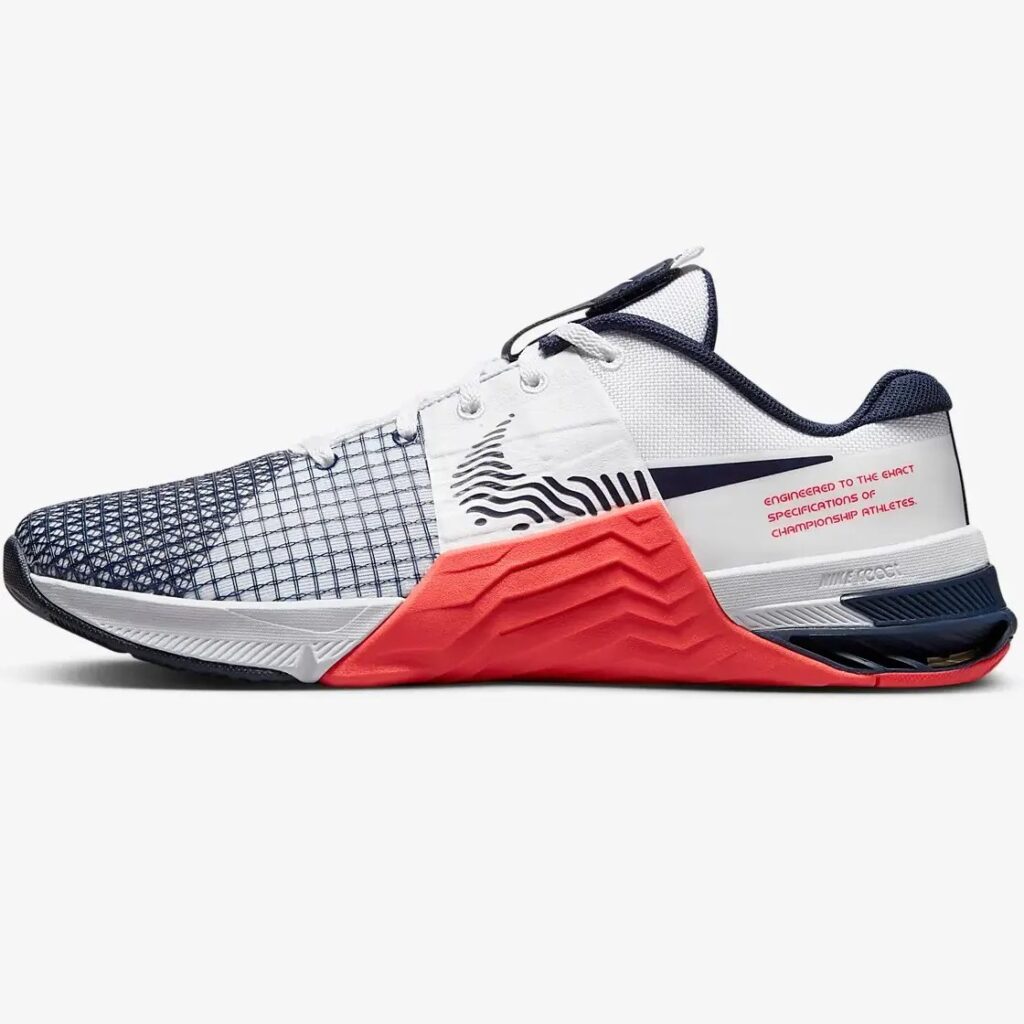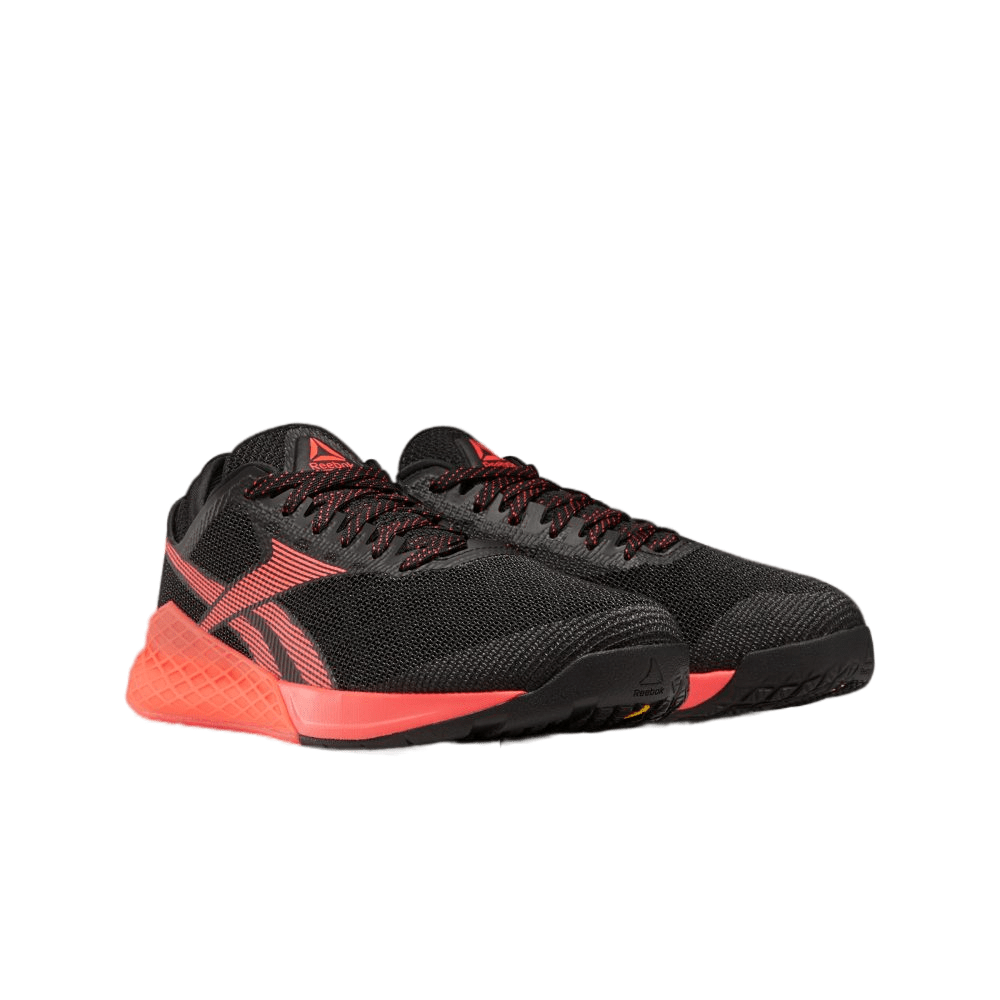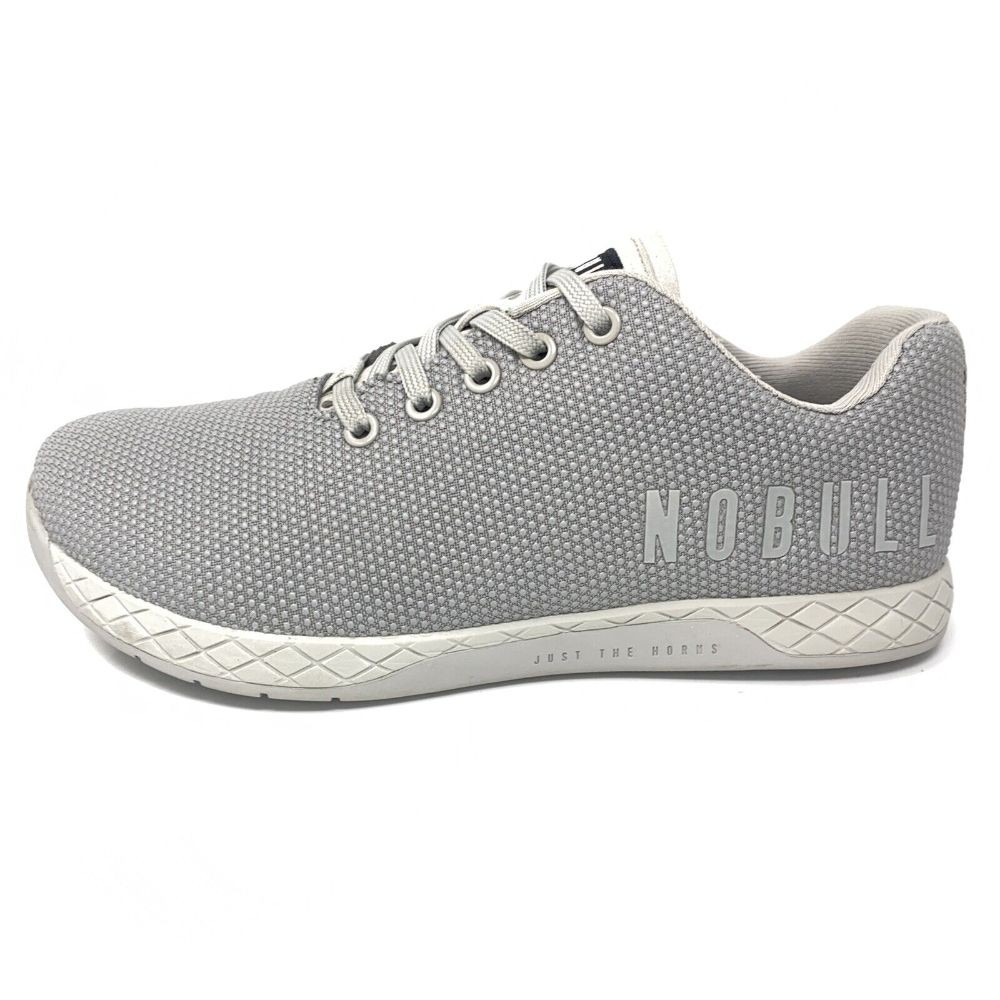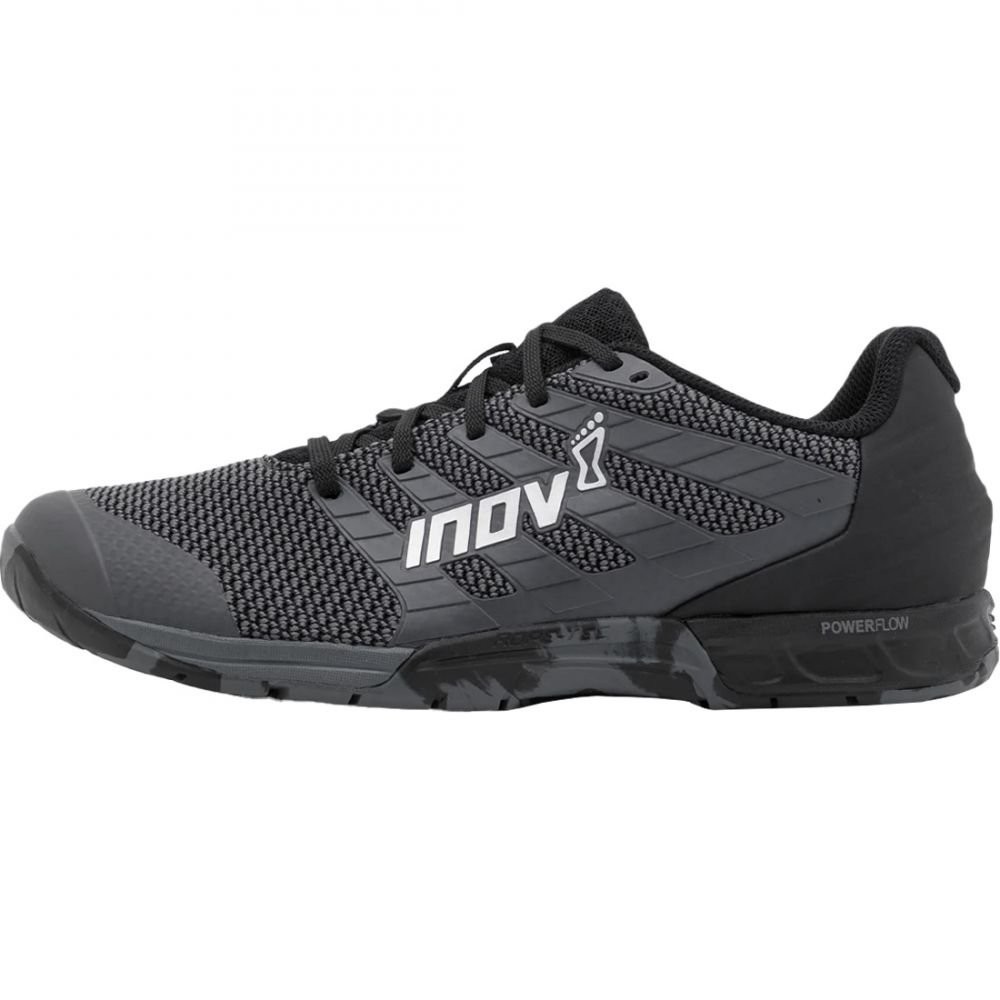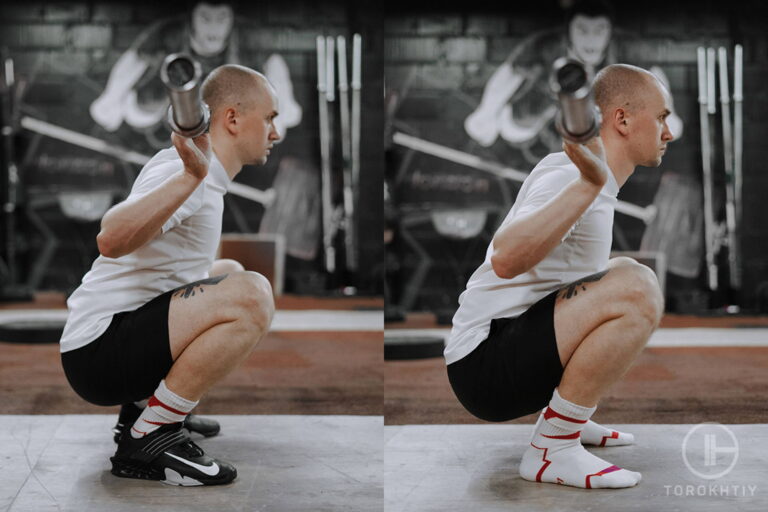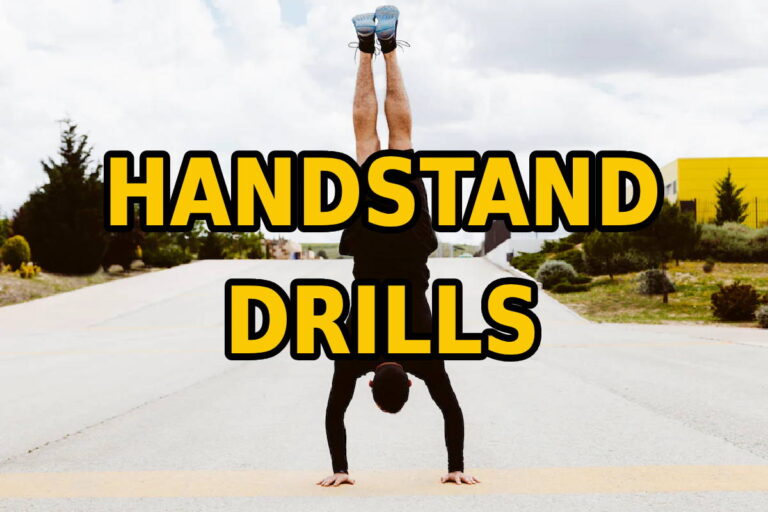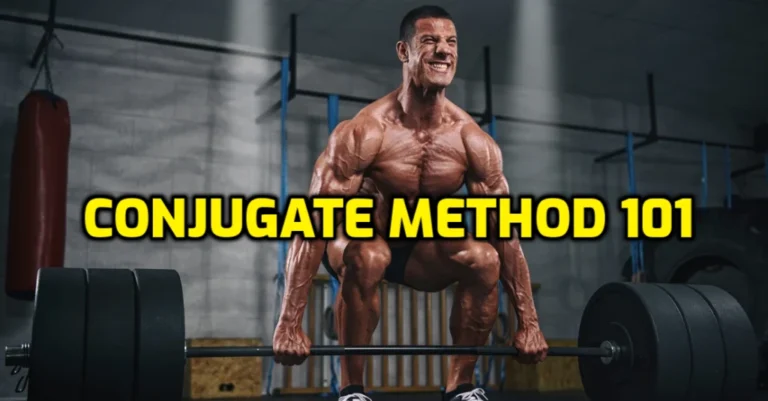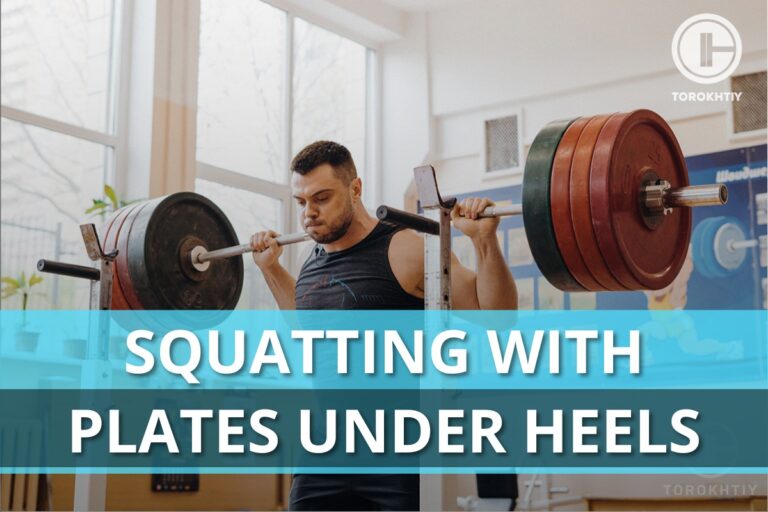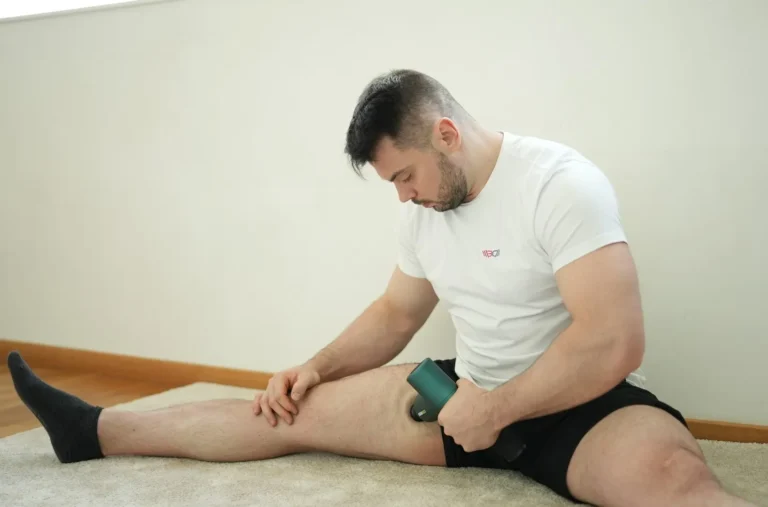Knee Pain From Fitness Training: Causes & Prevention
Functional fitness is the way to go if you’re looking to build strength and endurance. Knee pain from functional fitness® is very common and is one of the top five body regions athletes complain about during and after workouts. It doesn’t matter what your level of experience with fitness is, it’s always essential to understand how to treat and manage your knee pain to prevent prolonged damage and further injuries.
Their are many reason for knee pain during or after a fitness workout but a meniscus tear or an MCL injury are very common. These injuries occur due to poor ankle mobility, lower extremity weakness, poor technique and overuse.
In this article we will dive deeper in explaining what are the causes of knee pain and how to treat it, so you can improve your performance and consistency with your fitness training.
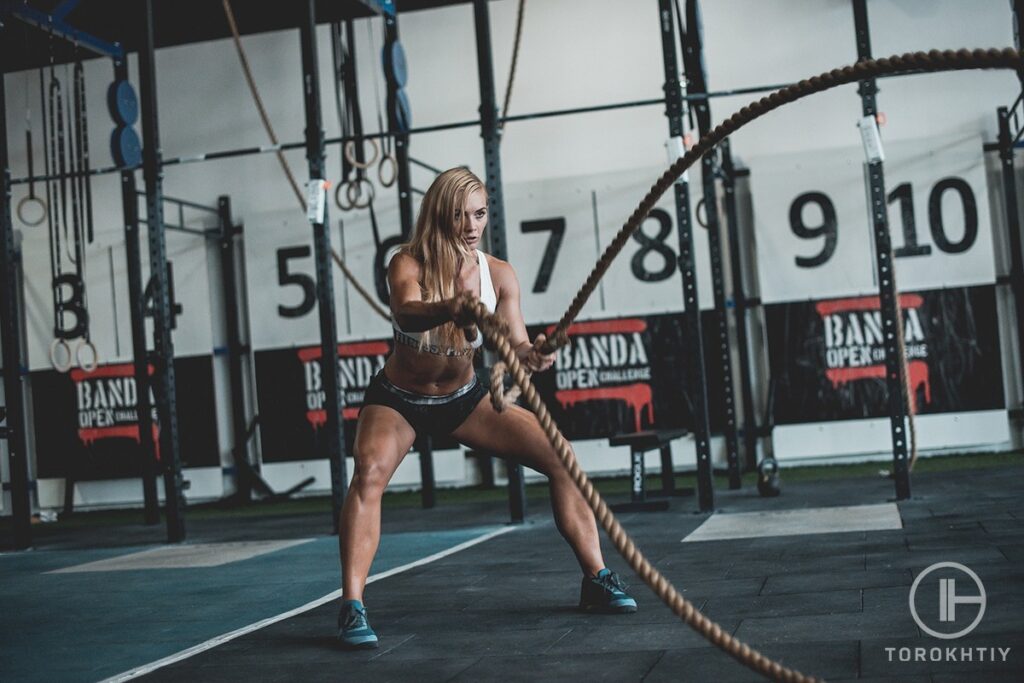
Introduction to Knee Pain From Functional Fitness
Developed by Gary Glassman, fitness is a high-intensity fitness program incorporating elements from several sports and types of exercise: aerobic exercise, calisthenics (bodyweight exercises), and Olympic weightlifting. The workout consists of high-intensity exercises ranging from gymnastics jumping, running, weightlifting, squatting, and rowing. Most fitness exercises put an extra workload on your lower body, leading to orthopedic injuries. Unfortunately, among these injuries, fitness knee injuries are the most common.
Types of Knee Pains/Injuries
If you start experiencing knee pain during your workout, there’s a high chance you’ve torn your meniscus or injured your MCL. Here are two of the most common knee pains from fitness.
1. Meniscus Tear From Fitness
The knee’s menisci are two fibrocartilaginous tissue pads that reduce friction in the knee joint between the thigh and the lower leg (tibia) (femur). They articulate with the tibia and are flat on the bottom and concave on top. The central meniscus receives blood from the exterior (periphery) of the meniscus. Age-related blood flow reduction and adulthood-onset avascularity of the central meniscus delay repair.
The menisci act as a shock absorber and barrier that disperse the body’s weight and reduce friction during movement.
Damage to the meniscus due to rotational forces directed to a flexed knee (as may occur with twisting sports) is the usual underlying mechanism of injury, like during a squat or a box jump. Meniscal injuries could cause swelling, limited lower extremity loading tolerance and pain.
2. MCL Injury
Your MCL (medial collateral ligament) plays an important role in horizontal stability and is located on the inner side of your knee. You’ll likely injure your MCL if you twist your knee while lifting weights or improperly land on your feet during a box jump or running.
MCL injuries are extremely painful and lead to bruising and inflammation at the knee joint. If severe, you can even experience pain and instability while walking.
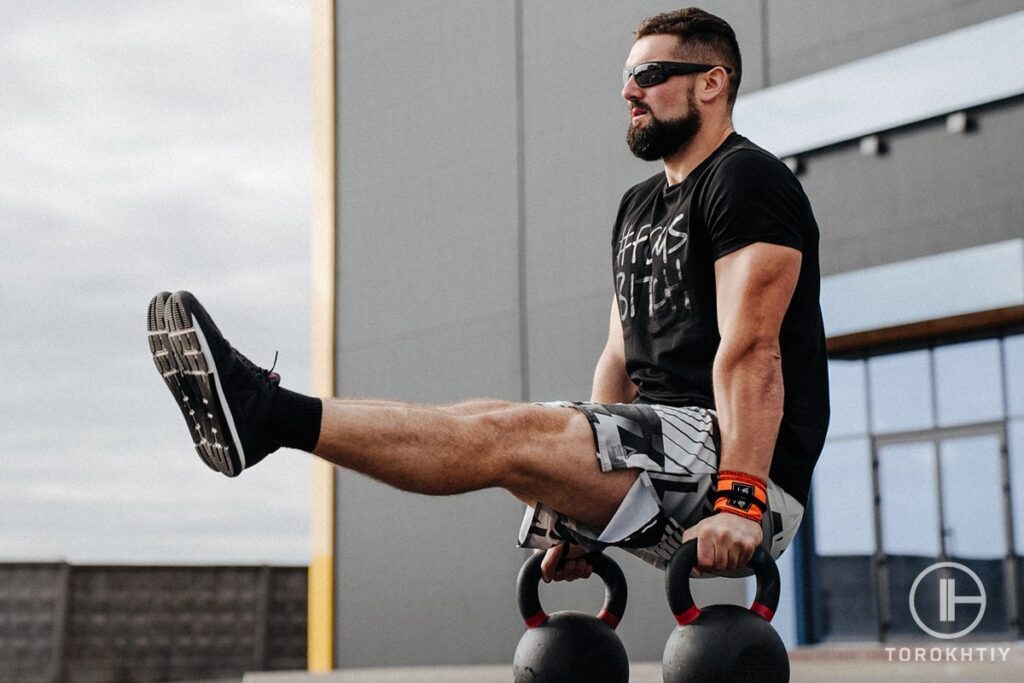
4 Causes of Knee Pain From Fitness Workouts
Your knee joint plays a vital role in your fitness workout, but it relies greatly on cues from different body parts. Any changes or weakness in your feet, ankles, back, or core can result in additional knee forces. This leads to knee pains and injuries.
1. Foot Instability/Flat Foot
Flat-footed athletes are at an exponentially higher risk of suffering from fitness knee pain. This is because the flat foot prevents efficient weight transfer from the foot to the leg during plyometric movements. Increasing the pressure at the knee joint when doing fitness exercises.
Our feet have arches, which help transfer the forces upwards from the foot to the rest of the body. So if you’re flat-footed, this transfer of forces gets disrupted, and your knee joint must bear its grunt.
Working out with a flat foot can cause your shin and thigh bones to twist inwards, leading to pressure on the knee joint and, eventually, knee injuries.
2. Poor Ankle Mobility
Not properly moving your foot at your ankle joint can also translate to fitness knee pain. Most people can easily push their toes downwards (plantarflexion) but cannot easily pull their toes upwards (dorsiflexion). You must have good dorsiflexion to properly do squats (especially speed squats) during your fitness workout.
If you want to raise yourself balanced after squatting down, you must first dorsiflex at your ankle to activate your muscles. Without proper dorsiflexion, you will be unable to decelerate your body. This can, in turn, lead to severe knee injuries. Not doing proper warm-ups or wearing the wrong type of shoes can also prevent efficient dorsiflexion.
3. An Unstable Core
Most functional fitness exercises involve the hip and knee joints. Your hip muscles, such as the psoas, use the spine as an anchor to pull at the femur or quads. This helps to transfer weight between your legs equally. If you have an unstable or weak spine, it will not anchor your muscles properly. This can lead to improper weight transfer between the legs, causing excess force on the knee joints.
4. A Weak Thigh Muscles
Your glutes connect to your lower leg through the IT band. Therefore, they can have a direct effect on your knee joint. If your glutes can’t fully stretch, it can lead to instability and knee injuries.
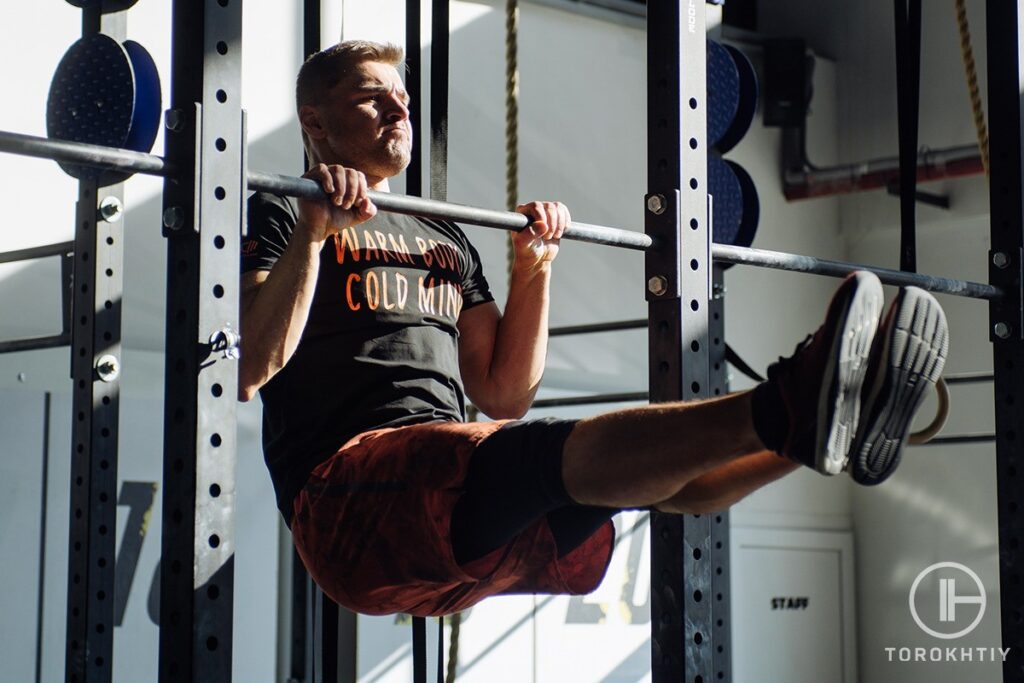
Recovery and Injury Prevention Strategies
It is better to perform fitness with bad knees if you suffer from knee pains. Not only does it make the workout even more painful, but you can also potentially worsen your condition. To minimize injuries and speed up your healing process, it’s important to keep the following things in mind:
2. Work on Your Form and Technique
This is one of the most important reasons why fitness Athletes have knee pain. Fixing your form can significantly reduce the risk of injuries during your workout. Talk to your fitness coach to help you improve you technique and form.
3. Take Your Rest Day Serious
Not every day you should be training or performing a personal record lift or time. Rest days are critical to improve fitness performance. Is the key to maximzie recovery decrease knee pain and minimize risk of injuries. We maximize our healing capacity during sleep and in our rest days.
4. Strengthen Your Glutes and Quads
As discussed above, your quads and glutes are vital in weight transfer at your knee joint. Besides doing fitness it’s highly recommended to perform accessory training to maximzie the strength of these muscle that prevent knee pain.
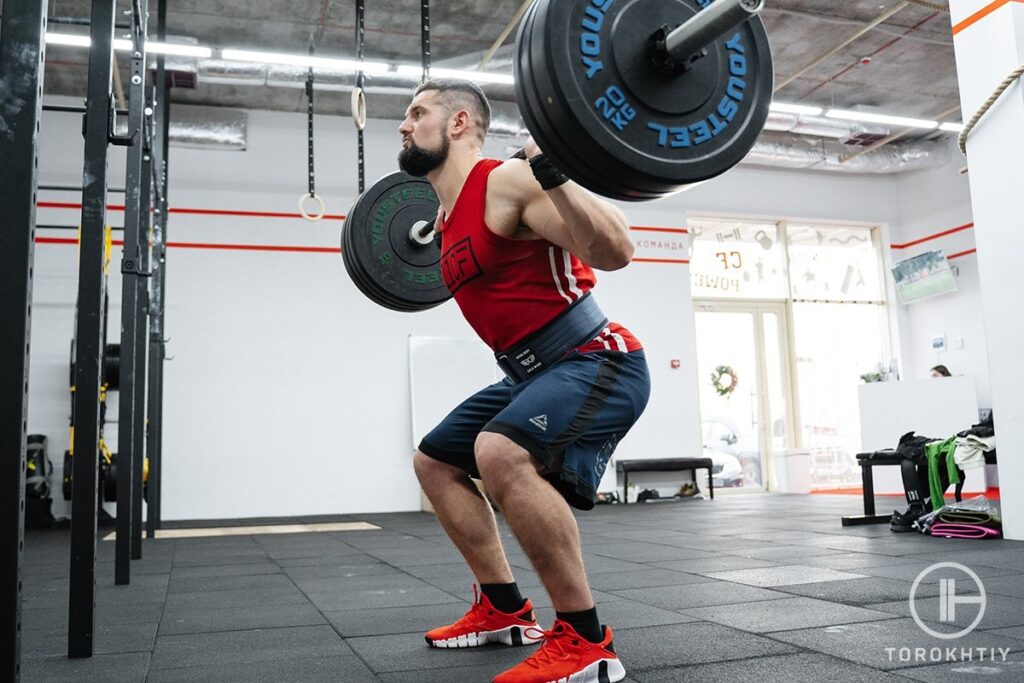
5. Improve Your Mobility
To improve your hip and ankle mobility is crucial to prevent or minimize knee injuries. Increasing your mobility and flexibility, especially with load will maximize your activity tolerance and minimize unnecessary knee pressure or discomfort. Here are some stretches and exercises you can do to improve the external hip rotation.
6. Progression Is Key
Workout out is all about testing your limits and pushing yourself, but you must know when to stop or how to pace your progress. If you’re doing weighted squats, start with lower weights and slowly build your strength. Jumping straight to heavy weights will exponentially increase the risk of knee injuries.
Treatment Options For Knee Pain From Functional Fitness
If you face knee pains while working out, it is extremely important to get it checked. Your doctor or physical therapist will examine your knee to rule out any red flags like a meniscus or MCL tear. If you’ve got neither, simply applying some ice in the first 24 to 48 hours to the painful knee and taking a couple of days off can calm the symptoms.
Treating a tearmeniscus or MCL may be slightly different. MCL injuries can usually heal independently and do not need a surgical approach. Your doctor may prescribe some NSAIDs, physical therapy, bracing, and rest days to let your body itself. Only in rare and extreme cases will your doctor opt for a surgical approach. You may need surgical reconstruction if you’ve got an associated PCL or ACL tear. Your doctor may prescribe Rest, Ice, Compression, and Elevation (RICE) for meniscal tears. You may also have to take some anti-inflammatory medicines based on the swelling. If none of these methods work, you may need a meniscectomy – a minimally invasive surgery.
Choosing The Right Fitness Gear And Accessories For Your Knee Health
Fitness is a fast-paced, high-intensity workout that requires proper form and posture. Using adequate workout gear and accessories is an important part of minimizing the risk of injuries.
Here are some must-haves to maintain knee health:
1. The Right Shoes
There are many different Cross training shoes out there. Choosing the best functional fitness shoes can depend on your individual needs and preferences, as well as the type of fitness workouts you plan on doing. However, here are some popular options that are often recommended:
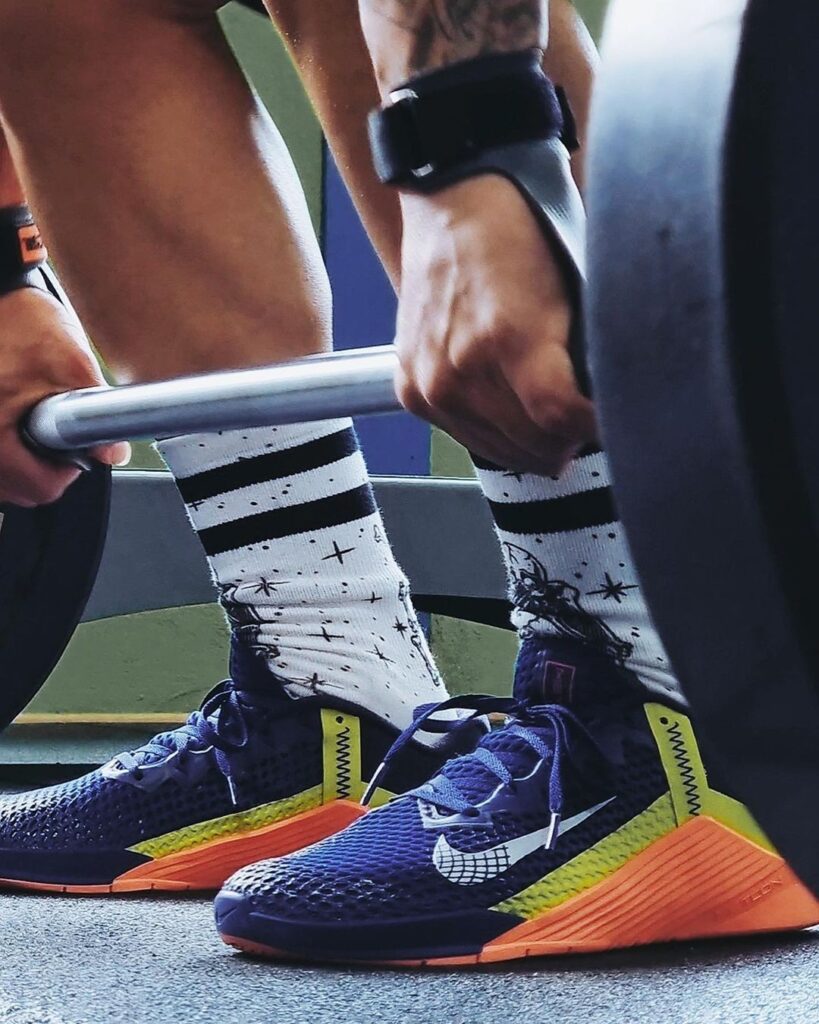
- Nike Metcon 8 – This shoe is known for its durability and stability, making it a great choice for weightlifting and high-intensity workouts.
2. Reebok Nano 9 – The Nano series is a popular choice among fitness athlets, and the Nano 9 offers a comfortable fit, good support, and durability.
3. NOBULL Trainer – This shoe is designed specifically for functional fitness training and is lightweight, flexible, and comfortable.
4. Inov-8 F-Lite 260 – This shoe is great for versatility and is known for its flexibility, allowing for natural movement during exercises like box jumps and burpees.
Knee Braces
Investing in a good knee sleeve can significantly help improve your workout regime if you have weak knees. Knee sleeves use compression material that helps support your knee joint, relieving it from any added stress.
FAQ
Can I Do Fitness with Bad Knees?
If you’re suffering from knee pain, avoiding high-intensity workouts such as fitness is best. Try icing your knee and taking a few days off. If it still doesn’t improve, you should see your doctor.
What Are the First Steps to Do for Knee Pain From Functional Fitness?
If you feel a sharp pain in your knee during your fitness workout, stop your training immediately and wait for the pain to subside. Ideally, rest and ice your knee, and if it doesn’t help, then see a healthcare professional for advice.
Conclusion
In conclusion, knee pain from fitness can be a common issue, but it is essential to take immediate action to prevent further injury and promote healing.
Rest and ice, consulting with a medical professional, modifying workouts, incorporating strength and mobility training, and wearing proper gear are all critical steps to take to address knee pain.
It’s also important to listen to your body and avoid pushing through pain. With appropriate care and modifications, it is possible to continue participating in fitness while managing knee pain. However, it’s important to consult with a medical professional to determine the extent of the injury and develop a personalized plan for treatment and prevention of future injury.
Also read:
- Knee Pain From Leg Press
- Knee Pain From Treadmill
- Knee Pain From Lifting
- Peloton Knee Pain
- Knee Pain After Working Out
- Knee Pain When Squatting
References:
- Knee menisci // Yoshi Yu: https://radiopaedia.org/articles/knee-menisci
- Fibrocartilage // Rheumatology (Sixth Edition): https://www.sciencedirect.com/topics/immunology-and-microbiology/fibrocartilage
- Medial collateral ligament of the knee // Andrew Murphy: https://radiopaedia.org/articles/medial-collateral-ligament-of-the-knee?lang=us
- Hip external rotation: Stretches, exercises, and more // Jayne Leonard: https://www.medicalnewstoday.com/articles/326922
- Subchondral insufficiency fracture post lateral meniscectomy // Yuan Ling: https://radiopaedia.org/cases/subchondral-insufficiency-fracture-post-lateral-meniscectomy?lang=us
Why Trust Us?
With over 20 years in Olympic Weightlifting, our team does its best to provide the audience with ultimate support and meet the needs and requirements of advanced athletes and professional lifters, as well as people who strive to open new opportunities and develop their physical capabilities with us.
By trusting the recommendations of our certified experts in coaching, nutrition, dietology, and sports training programming, as well as scientific consultants, and physiotherapists, we provide you with thorough, well-considered, and scientifically proven content. All the information given in the articles concerning workout programming, separate exercises, and athletic performance, in general, is based on verified data. We ensure that you can rely on our professionals’ pieces of advice and recommendations that can be treated as personalized ones which will benefit you and fully meet your needs.
The product testing process is described in more detail here
Author: Ernesto Mendez
Orthopedic Clinical Specialist
Best Results: Snatch – 208 kg,
C&J – 240 kg
Dr. Ernesto Mendez is a licensed physical therapist, a board Orthopedic Clinical Specialist (OCS) and founder of Movement 4 Wellness Physical Therapy, LLC. He earned his degree from Thomas Jefferson University. He is also an Olympic weightlifting coach (USAW L1) and Functional Fitness Level 1 Trainer. His experience includes the areas of pain management, movement analysis, injury recovery, surgical rehab, corrective exercise, and athletic, military, and occupational performance. Dr Mendez is passionate about Olympic weightlifting and fitness. Ernesto Mendez is responsible for designing multiple training programs, writing blog articles, posting daily weightlifting content, doing live weightlifting and mobility seminars.

